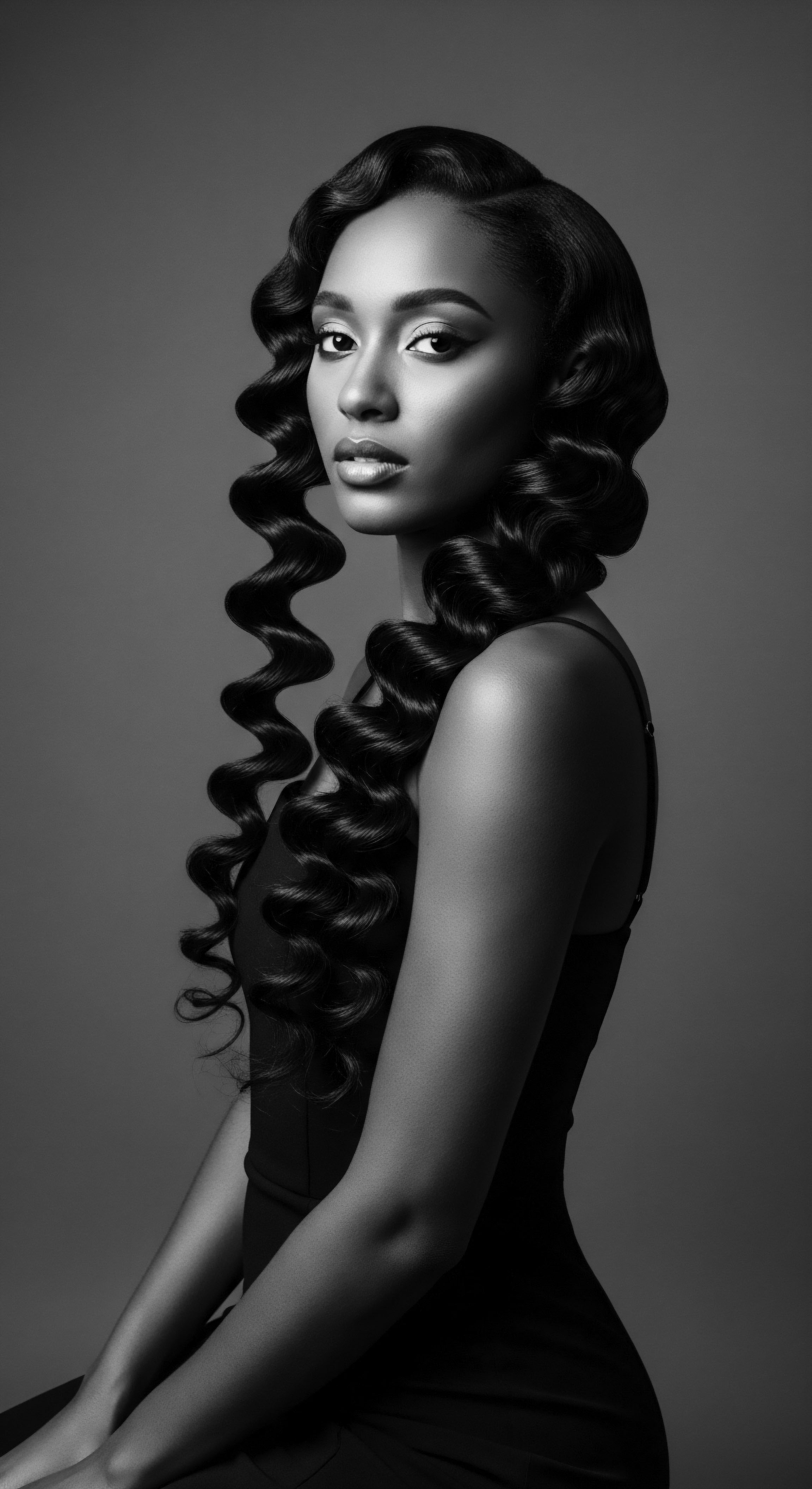
Fundamentals
The concept of Black Heritage, as illuminated within Roothea’s living library, stands as a profound testament to the enduring spirit, creative ingenuity, and deep historical connections of people of African descent. It is far more than a simple category; it represents a vibrant, continuous lineage of cultural practices, communal bonds, and inherited wisdom, particularly as expressed through the intricate language of textured hair. This heritage, a living archive, carries the echoes of ancient traditions forward into the present, offering a powerful source of identity and resilience.
At its very foundation, Black Heritage signifies the collective legacy passed down through generations, encompassing artistic expressions, spiritual understandings, social structures, and modes of survival that have shaped the experiences of Black and mixed-race communities across the globe. This legacy is not static; rather, it is a dynamic, evolving force, constantly reinterpreted and reaffirmed through lived experience. The exploration of this heritage invites a deep appreciation for the myriad ways African peoples have adapted, innovated, and maintained their cultural integrity despite immense challenges.
Black Heritage represents a vibrant, continuous lineage of cultural practices, communal bonds, and inherited wisdom, particularly as expressed through the intricate language of textured hair.
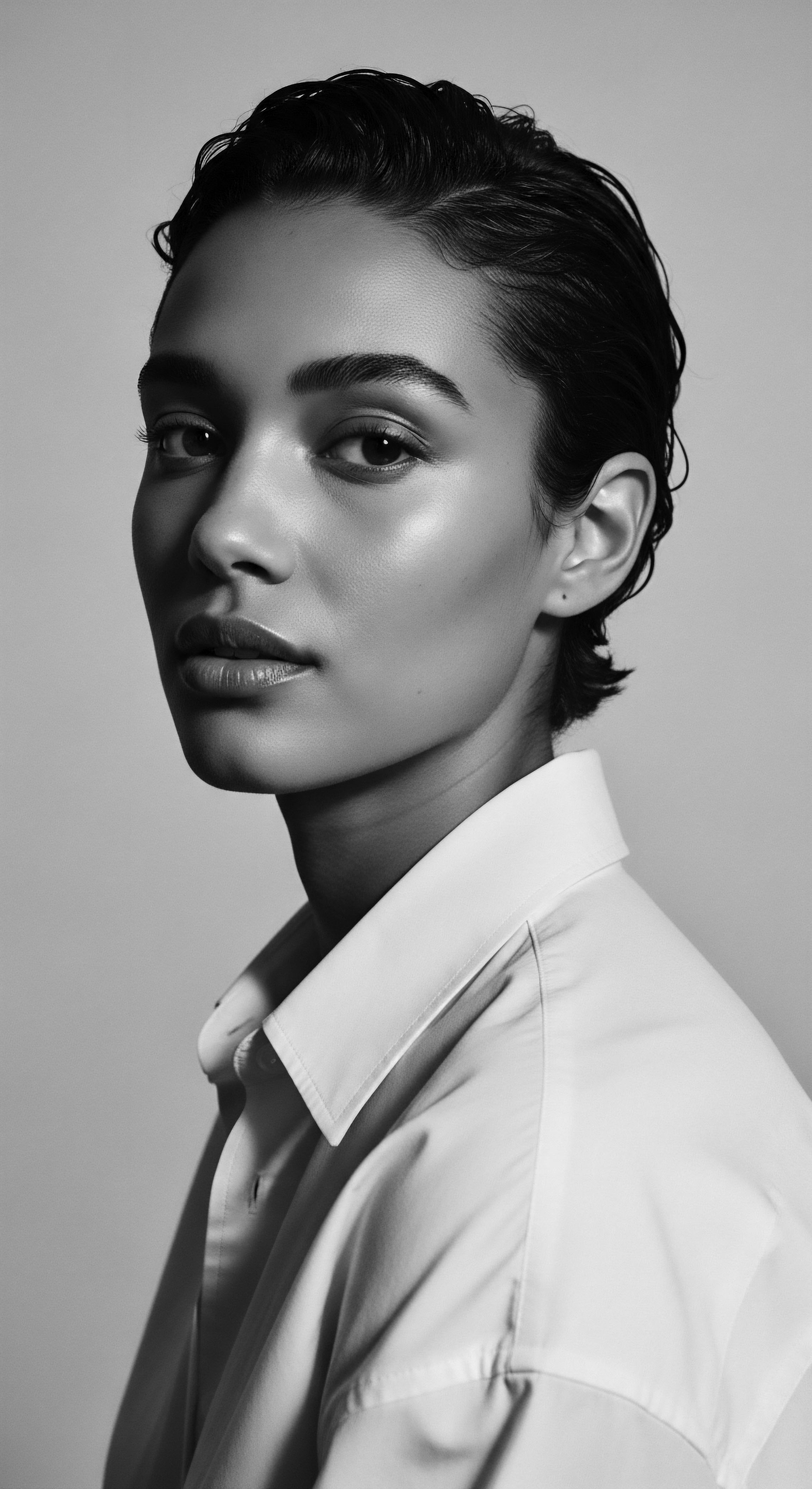
The Roots of Textured Hair in Ancestral Lands
The biological reality of textured hair, with its unique coil patterns and structural characteristics, is a direct inheritance from African ancestors. This elemental biology is intrinsically linked to the geographical and environmental conditions of the African continent, where hair offered natural protection against the sun’s intense rays and adapted to varying climates. The diverse hair textures found across West Africa alone, ranging from the tightly coiled strands of the Mandingos to the more loosely curled hair of the Ashanti, speak to the rich genetic diversity within the continent itself (Byrd & Tharps, 2001, p.
1). This biological distinction became a canvas for cultural expression long before the transatlantic slave trade, serving as a visual marker of identity, status, and community affiliation.
Ancestral practices surrounding hair care were deeply interwoven with daily life, spiritual beliefs, and social hierarchies. Hair was rarely viewed as a mere aesthetic adornment; instead, it held profound symbolic significance. In many African societies, the appearance of one’s hair could communicate a person’s age, marital status, religious beliefs, kinship, or even wealth (Byrd & Tharps, 2001, p. 1; Beds SU, 2022).
Unkempt hair, for example, might signify bereavement, depression, or even a state of mental distress (Byrd & Tharps, 2001, p. 22). This profound connection meant that hair care rituals were communal, often involving elders, and served as moments of teaching, bonding, and the transmission of cultural knowledge.
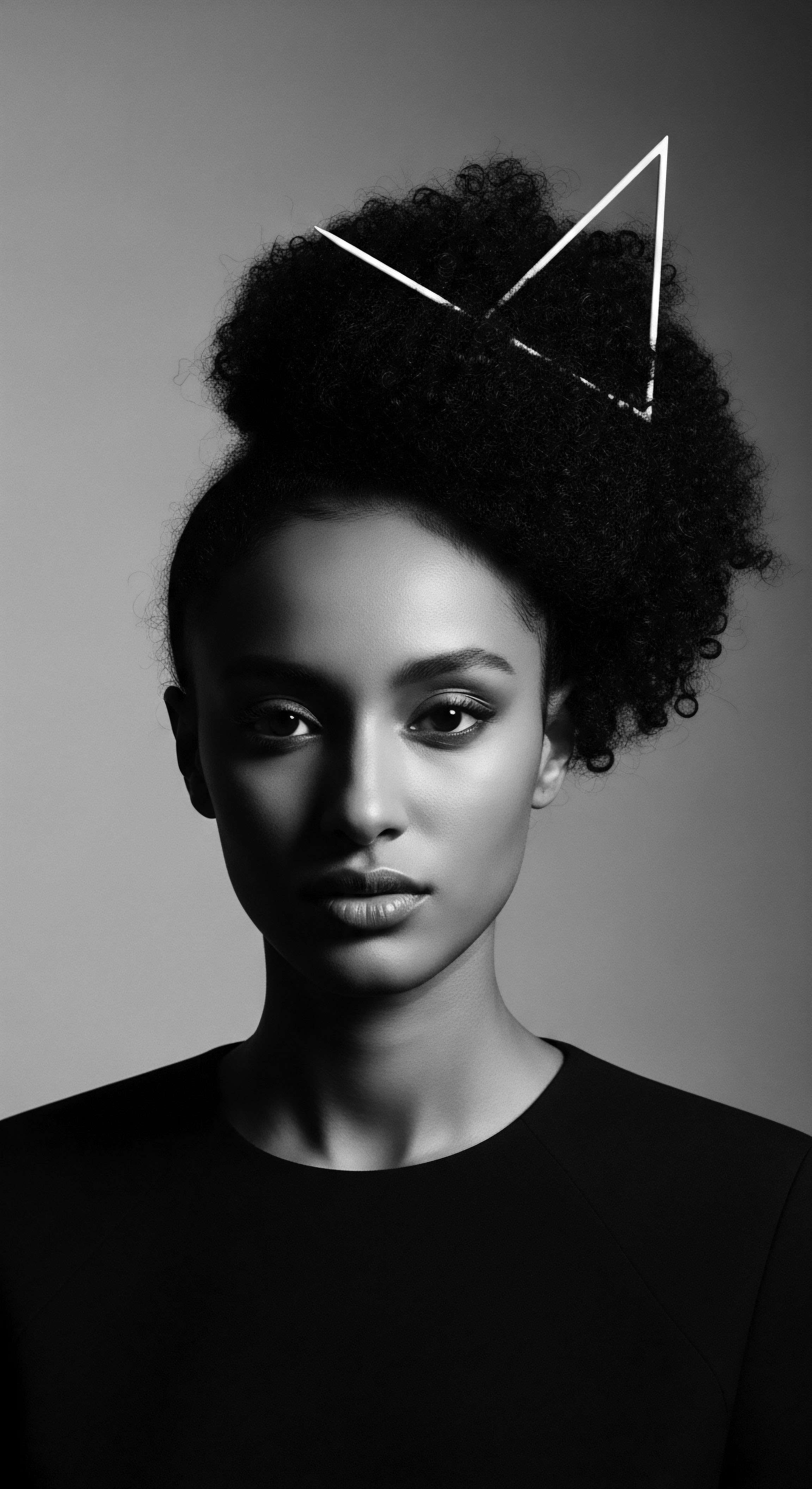
Early Practices and Their Enduring Wisdom
The earliest documented instances of intricate hair styling, including cornrows, stretch back to at least 3000 BC, evidenced in Stone Age paintings from the Tassili Plateau of the Sahara (Beds SU, 2022). Ancient Egyptians, both men and women, adorned their cornrows and braids with gold thread and other precious items, highlighting the esteemed position of hair within society (Beds SU, 2022). These traditions were not simply about styling; they were holistic practices that considered the health of the scalp and strands, utilizing natural ingredients sourced from the environment.
- Shea Butter ❉ Derived from the nuts of the shea tree, this rich emollient was widely used across West Africa for its moisturizing and protective properties, providing deep nourishment for hair and skin.
- Palm Oil ❉ A staple in many African diets, palm oil also found its place in hair care, known for its conditioning qualities and ability to add a natural sheen to hair.
- Henna ❉ While often associated with South Asia, henna (Lawsonia inermis L.) has been used for centuries by Moroccan women to strengthen, revitalize, color, and restore shine to hair, with traditions extending across parts of Africa (Mouchane et al. 2023).
These traditional approaches underscore a wisdom that recognized the intrinsic link between external care and internal well-being. The act of cleansing, oiling, and styling hair was often a meditative process, connecting individuals to their lineage and the natural world. This foundational understanding of hair as a conduit for cultural identity and ancestral connection forms the bedrock of Black Heritage, a concept that continues to resonate with deep significance for textured hair today.
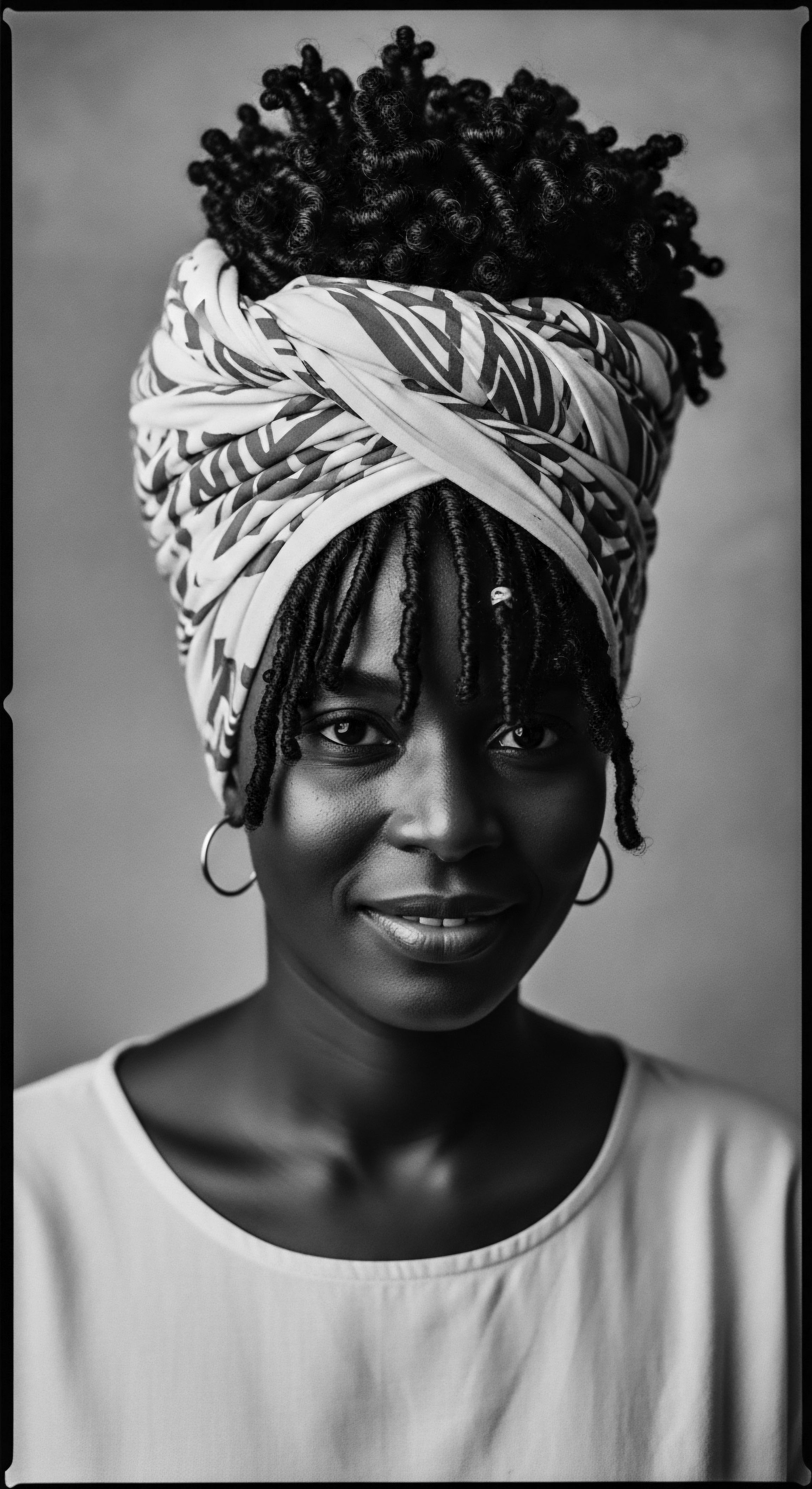
Intermediate
Expanding upon the foundational understanding, Black Heritage, at an intermediate level of examination, represents a complex tapestry woven from resilience, resistance, and the continuous assertion of identity through cultural expression, with textured hair serving as a particularly potent symbol. The historical journey of Black hair, from its revered status in pre-colonial Africa to its politicization during enslavement and its reclamation in modern movements, delineates the profound significance of this heritage. It is a story of how an elemental biological trait became a profound carrier of cultural meaning and a battleground for self-determination.
The systematic efforts during the transatlantic slave trade to strip enslaved Africans of their cultural identity often began with the forcible shaving of heads upon arrival in the Americas (Byrd & Tharps, 2001, p. 23). This act, seemingly for sanitary reasons, was a calculated psychological assault, aiming to sever the deep connection between individuals and their ancestral practices, communal identity, and sense of self. Yet, even in the face of such dehumanization, the spirit of Black Heritage found ways to persist, often through the very hair that oppressors sought to control.
Black Heritage, at an intermediate level of examination, represents a complex tapestry woven from resilience, resistance, and the continuous assertion of identity through cultural expression.

Hair as a Medium of Resistance and Communication
During the era of enslavement, hair transcended its aesthetic purpose to become a clandestine tool for survival and rebellion. Enslaved individuals, deprived of writing materials and under constant surveillance, ingeniously transformed their hairstyles into hidden maps and coded messages. This ingenious practice is particularly well-documented in Colombia, where Benkos Biohó, a formerly enslaved king, established a free Palenque village and created an intelligence network. Women in this community famously used their cornrows to relay escape routes and meeting times without arousing suspicion (Beds SU, 2022; The Carolinian Newspaper, 2025; Black owned business directory, 2019).
For instance, a braided hairstyle called Departe, meaning “to depart,” would signal an impending escape. More intricate braids would then form actual maps of escape routes from plantations, with various styles representing obstacles or landmarks. A braid shaped like a worm could signify a river, while a Bantu knot might denote a mountain (ArcGIS StoryMaps, 2023). Thicker braids, known as Tropas (troops), even indicated the presence of soldiers along the route (ArcGIS StoryMaps, 2023).
Beyond navigation, women also concealed seeds within their braids, providing sustenance for their perilous journeys and enabling them to cultivate new life in free settlements (ArcGIS StoryMaps, 2023; Black owned business directory, 2019). This profound historical example underscores the multifaceted ingenuity embedded within Black Heritage, demonstrating how cultural practices were not merely preserved, but actively adapted for survival and liberation.

The Shifting Sands of Perception and Reclamation
Following enslavement, the perception of Black hair continued to be shaped by prevailing Eurocentric beauty standards, which often deemed natural textured hair as “unprofessional,” “messy,” or “unmanageable” (White-Jolivette, 2021; Research, 2025). This societal pressure led many Black individuals to chemically straighten their hair or adopt styles that conformed to dominant norms, often at the expense of hair health and a connection to ancestral aesthetics (Research, 2025; Don’t touch my hair!, 2022). The “good hair” versus “bad hair” dichotomy became a painful internalized consequence of systemic discrimination (Byrd & Tharps, 2001, p. 2; Don’t touch my hair!, 2022).
The mid-20th century witnessed a powerful resurgence of pride in Black Heritage, largely fueled by the Civil Rights and Black Power movements. The embrace of the Afro hairstyle became a potent symbol of self-acceptance, political protest, and a reclamation of African identity (ResearchGate, 2024; Don’t touch my hair!, 2022). This period marked a significant turning point, where hair was deliberately used to assert cultural pride and challenge oppressive beauty ideals.
The ongoing natural hair movement, gaining momentum in the early 2000s, further solidifies this reclamation. It encourages individuals of African descent to embrace their natural coils, kinks, and curls, fostering a deeper connection to their heritage and promoting holistic hair wellness. This movement highlights the resilience of Black Heritage, demonstrating its capacity to adapt, resist, and redefine beauty on its own terms. The journey of Black hair, from a tool of covert communication to a beacon of overt cultural pride, illustrates the dynamic and ever-present force of this heritage.

Academic
From an academic vantage point, the concept of Black Heritage transcends anecdotal understanding, manifesting as a complex socio-cultural construct rooted in historical exigencies, biological realities, and the persistent human drive for identity and self-determination. It represents the accumulated cultural capital, epistemological frameworks, and embodied practices originating from African civilizations and adapted across the diaspora, particularly evident in the profound and often politicized domain of textured hair. This scholarly interpretation delineates Black Heritage as a dynamic interplay of ancestral knowledge, adaptive strategies, and continuous cultural production, challenging Eurocentric hegemonies that have historically sought to diminish or erase its significance.
The academic meaning of Black Heritage, especially through the lens of textured hair, involves a rigorous examination of how elemental biology (hair morphology) intersects with social semiotics, economic structures, and psychological well-being. It is an exploration of how a phenotypic trait, through centuries of oppression and resistance, became a central site for the negotiation of racial identity, collective memory, and cultural continuity. This perspective recognizes that hair is not merely an appendage; it functions as a deeply inscribed text, capable of conveying intricate cultural narratives, historical struggles, and enduring aspirations.
Black Heritage, from an academic vantage point, manifests as a complex socio-cultural construct rooted in historical exigencies, biological realities, and the persistent human drive for identity and self-determination.

The Biopsychosocial Dimensions of Textured Hair Heritage
The unique helical structure of Afro-textured hair, characterized by its elliptical cross-section and numerous twists, contributes to its distinct coiling patterns and susceptibility to dryness and breakage compared to straighter hair types. This biological predisposition, while a natural adaptation to diverse African climates, became weaponized during periods of colonial subjugation and enslavement. The imposition of Eurocentric beauty standards, which privileged straight hair, pathologized Black hair, labeling it as “nappy” or “unprofessional” (Mbilishaka, 2024; Don’t touch my hair!, 2022). This systemic denigration profoundly impacted the psychological landscape of Black individuals, leading to internalized racism and negative self-perception (Mbilishaka, 2024; Research, 2025).
Academic research consistently reveals the pervasive nature of hair discrimination and its detrimental effects on mental health and well-being. A study by Mbilishaka (2024) utilizing a guided hair autobiography method with 90 African American community members, demonstrated that experiences of hair discrimination, based on texture, length, and style, frequently resulted in sadness and interpersonal rejection, both in intimate and public settings. This discrimination, often manifesting as microaggressions, contributes to chronic stress, anxiety, and a sense of cultural disconnection (Research, 2025). The pressure to conform to dominant beauty norms, often through chemical straightening, carries not only physical risks to hair health but also significant psychological costs, compelling individuals to suppress aspects of their authentic identity (Research, 2025; Don’t touch my hair!, 2022).

Ethnobotanical Wisdom and Modern Validation
The ancestral wisdom embedded within Black Heritage concerning hair care practices is increasingly finding validation through contemporary scientific inquiry, bridging the gap between traditional knowledge and modern understanding. Ethnobotanical studies, particularly those focused on African medicinal plants, reveal a rich heritage of natural remedies employed for hair health and growth. For instance, a survey conducted in Karia ba Mohamed, Northern Morocco, identified 42 species of medicinal plants traditionally used for hair treatment and care, with a high frequency of citation for plants like Lawsonia Inermis L. (Henna) for strengthening and revitalizing hair, and Rosa Centifolia L. (Rose) for anti-dandruff and growth stimulation (Mouchane et al.
2023, p. 202).
Another comprehensive review of African plants used in hair treatment compiled 68 species, noting their traditional uses for conditions such as alopecia, dandruff, and lice removal (Adebayo et al. 2024). The most represented families in these traditional practices, such as Lamiaceae, Fabaceae, and Asteraceae, are now subjects of phytochemical and pharmacological studies seeking to understand their biological mechanisms (Adebayo et al. 2024).
This academic exploration confirms that many ancestral practices, far from being mere folklore, represent sophisticated applications of natural compounds with tangible benefits for scalp and hair vitality. The enduring wisdom of these traditions, passed down through generations, offers a powerful testament to the efficacy of heritage-based approaches to wellness.
| Traditional Ingredient Shea Butter (Vitellaria paradoxa) |
| Ancestral Application (Historical Context) Used across West Africa for centuries to moisturize and protect hair from environmental stressors, applied as a balm for softness and sheen. |
| Contemporary Scientific Link (Roothea's Insight) Rich in fatty acids and vitamins A and E, shea butter provides deep conditioning and forms a protective barrier, reducing moisture loss and breakage. (Juniper Publishers, 2024) |
| Traditional Ingredient Henna (Lawsonia inermis L.) |
| Ancestral Application (Historical Context) Applied as a paste for conditioning, strengthening, and adding a reddish tint to hair, revered for its fortifying qualities in North African traditions. |
| Contemporary Scientific Link (Roothea's Insight) Contains lawsone, a natural dye molecule that binds to keratin, thickening the hair shaft and providing a protective coating, thereby reducing breakage and enhancing strength. (Mouchane et al. 2023) |
| Traditional Ingredient Rosemary (Rosmarinus officinalis L.) |
| Ancestral Application (Historical Context) Utilized in decoctions or infusions to stimulate the scalp and prevent hair loss in various African communities. |
| Contemporary Scientific Link (Roothea's Insight) Contains compounds like rosmarinic acid and carnosic acid, which possess anti-inflammatory and antioxidant properties, potentially stimulating circulation and promoting hair growth. (Mouchane et al. 2023) |
| Traditional Ingredient These examples highlight how ancestral botanical knowledge offers a continuous source of inspiration for understanding holistic hair care, affirming the deep connection between heritage and well-being. |
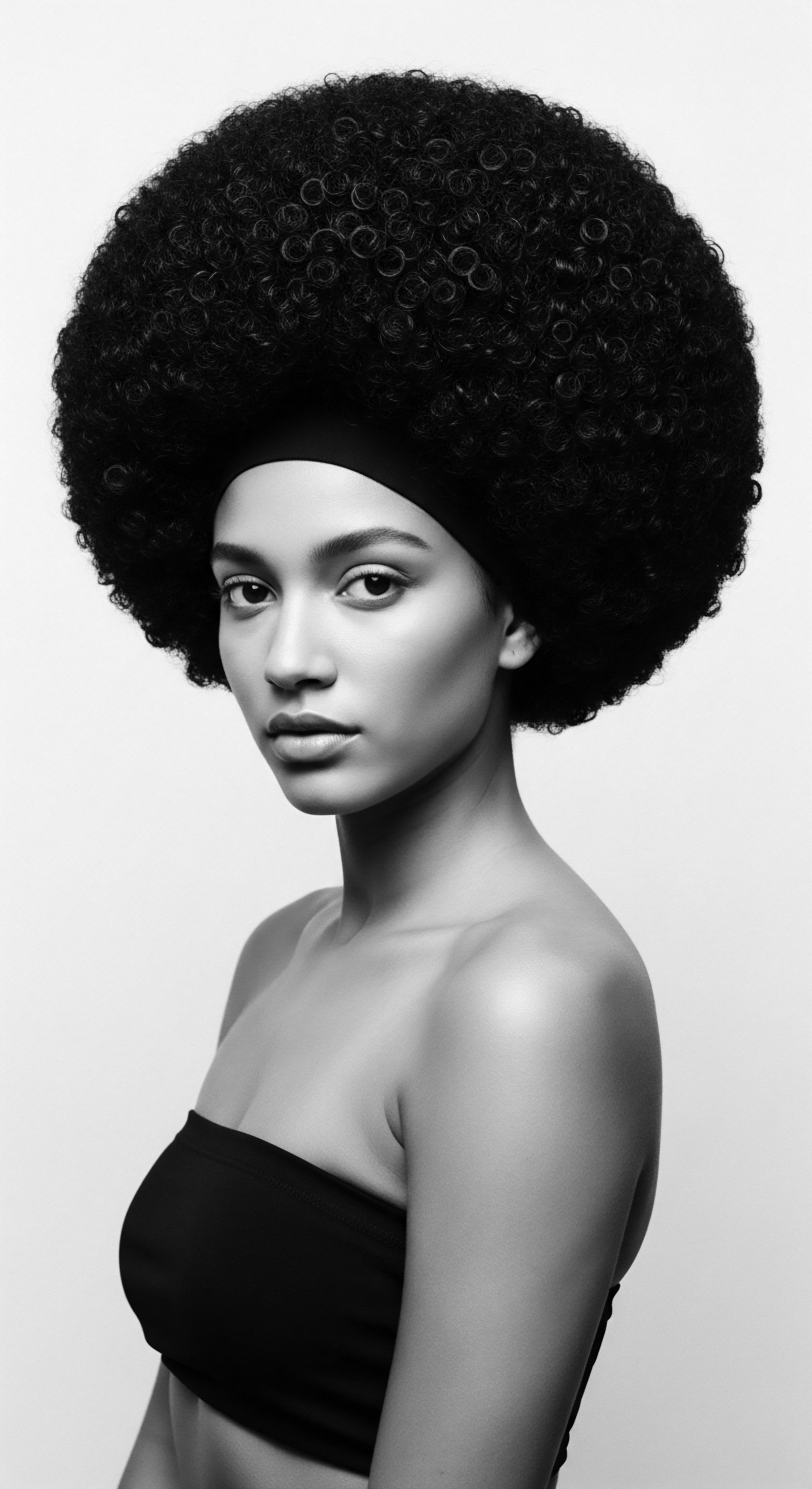
The Sociopolitical Dimensions of Black Hair Identity
The meaning of Black Heritage, particularly through hair, extends into the complex sociopolitical landscape of identity formation and collective action. Hair, in this context, functions as a powerful marker of racial identity, belonging, and resistance against dominant cultural norms. The act of wearing natural textured hair, for many Black women, is not merely a style preference; it is a conscious affirmation of heritage and a rejection of Eurocentric beauty standards that have historically marginalized their appearance (White-Jolivette, 2021).
The Black Power Movement of the 1960s and 1970s serves as a compelling case study of hair’s role in collective identity formation. During this period, the adoption of the Afro became a potent symbol of unity and Black pride, challenging assimilationist pressures and asserting a distinct cultural aesthetic (ResearchGate, 2024). This counter-hegemonic use of appearance allowed individuals to construct and negotiate a collective identity aligned with the broader struggle for racial equality (ResearchGate, 2024). The political significance of the Afro, particularly as embodied by figures like Angela Davis, made it a widely recognized symbol of Black liberation (ResearchGate, 2024).
Contemporary movements, such as the natural hair movement, continue this legacy, fostering self-acceptance and challenging systemic hair discrimination in educational and professional settings. Despite legislative efforts like the CROWN Act in the United States, which prohibits discrimination based on hair texture or style, Black individuals, especially women, still face biases that impact their professional opportunities and sense of belonging (Don’t touch my hair!, 2022; Emerald Insight, 2023). A study by Dove reported that Black women are 3.4 times more likely to be labeled unprofessional due to their hair presentation and 1.5 times more likely to be sent home for “unprofessional hair” (Emerald Insight, 2023).
This ongoing struggle underscores that Black Heritage, as expressed through hair, remains a site of both profound cultural affirmation and persistent societal challenge, demanding continued advocacy and understanding. The definition of Black Heritage thus becomes a dynamic, living concept, shaped by historical forces, scientific insights, and the ongoing quest for self-actualization within a globalized context.
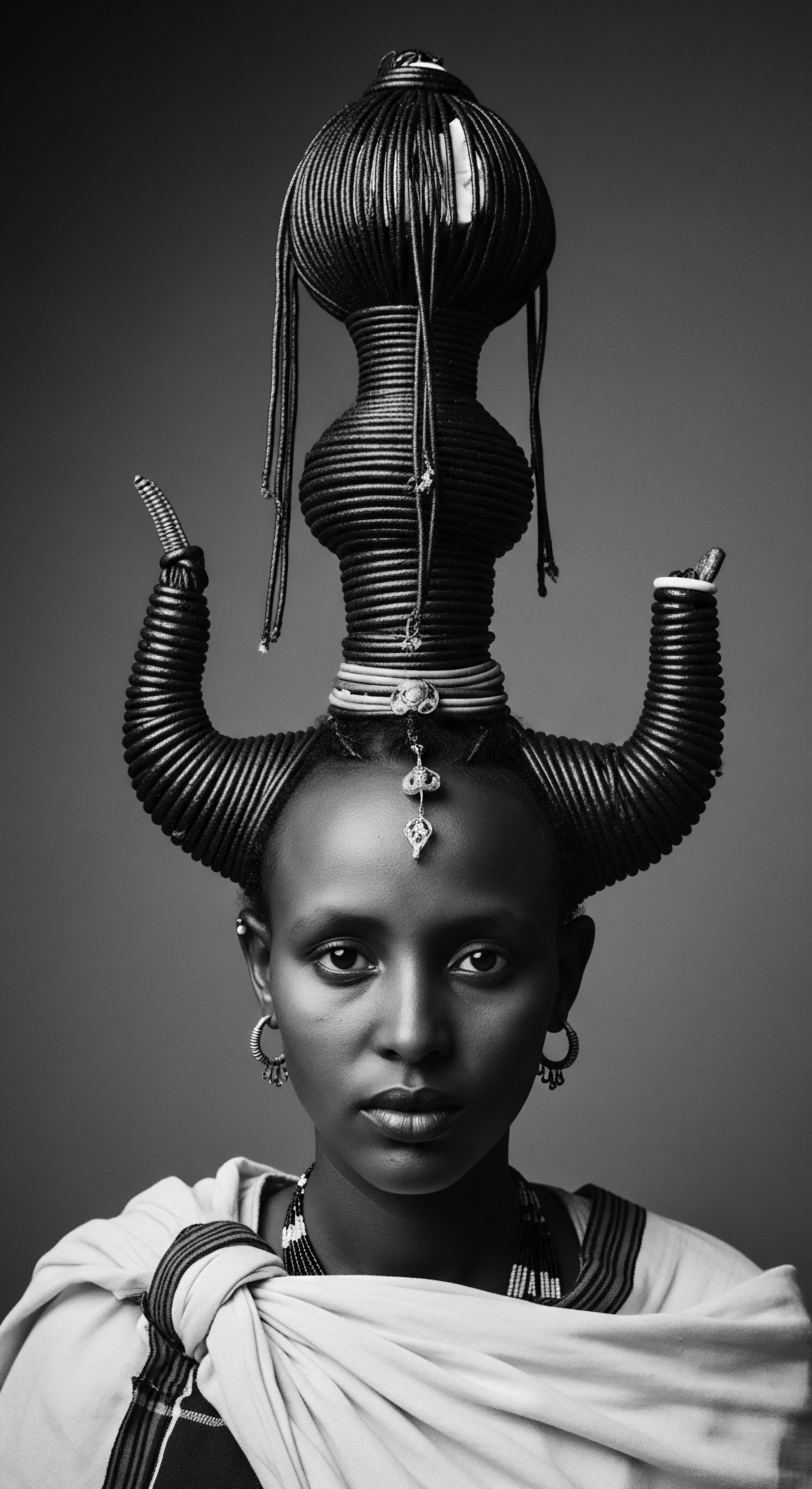
Reflection on the Heritage of Black Heritage
As we conclude this exploration, the enduring significance of Black Heritage, particularly as it intertwines with textured hair, emerges not as a fixed historical artifact, but as a living, breathing testament to the profound human capacity for resilience and self-expression. It is a heritage that speaks through every coil, every kink, every curl, whispering stories of survival, innovation, and triumphant beauty. The “Soul of a Strand” ethos, central to Roothea’s philosophy, finds its deepest resonance here, acknowledging that hair is far more than protein filaments; it is a sacred extension of self, a direct link to ancestral wisdom, and a vibrant declaration of identity.
This journey through the echoes from the source, the tender thread of care, and the unbound helix of identity reveals a continuous narrative. It is a story where the biological uniqueness of textured hair became a canvas for intricate cultural practices, a clandestine map for freedom, and ultimately, a powerful emblem of pride. The deep understanding of natural ingredients, passed down through generations, offers a timeless blueprint for holistic wellness, gently affirmed by modern scientific inquiry.
The ongoing dialogue surrounding Black hair in contemporary society, while still marked by challenges, represents a profound continuation of this heritage. It is a testament to the unwavering spirit of Black and mixed-race communities who, despite historical attempts at erasure, continue to redefine beauty on their own terms. This heritage invites us all to look beyond superficial appearances and recognize the profound cultural wealth, the ancestral strength, and the boundless creativity that resides within every strand. It is a call to honor the past, celebrate the present, and shape a future where every hair story is cherished, understood, and revered.
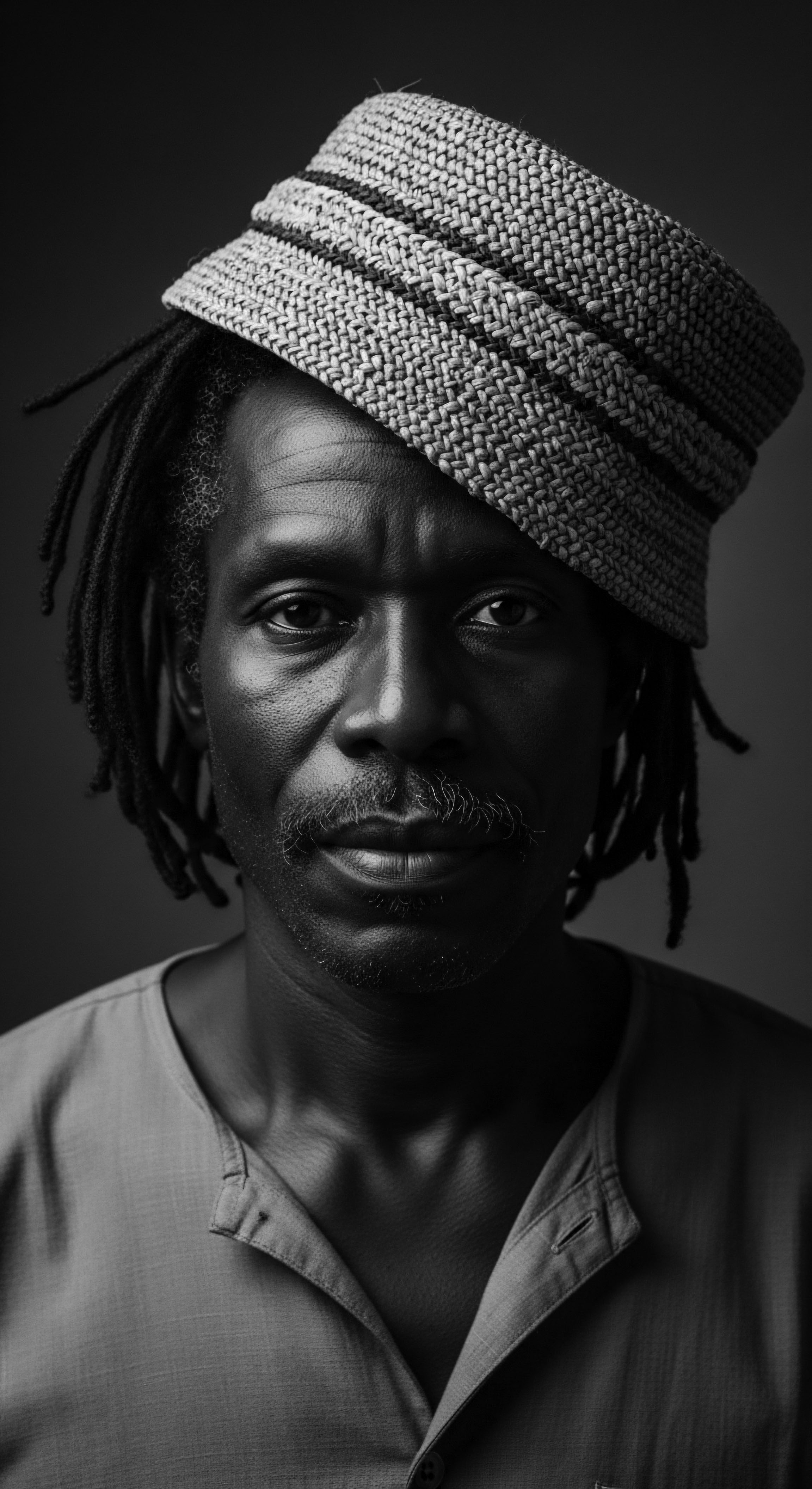
References
- Adebayo, A. J. Alademehin, O. A. & Owolabi, M. S. (2024). Cosmetopoeia of African Plants in Hair Treatment and Care ❉ Topical Nutrition and the Antidiabetic Connection? Diversity, 16(2), 96.
- Byrd, A. D. & Tharps, L. L. (2001). Hair Story ❉ Untangling the Roots of Black Hair in America. St. Martin’s Press.
- Mouchane, M. Taybi, H. Gouitaa, N. & Assem, N. (2023). Ethnobotanical Survey of Medicinal Plants used in the Treatment and Care of Hair in Karia ba Mohamed (Northern Morocco). Journal of Medicinal Plants and By-Products, 13(1), 201-208.
- Mbilishaka, A. M. (2024). Don’t Get It Twisted ❉ Untangling the Psychology of Hair Discrimination Within Black Communities. American Journal of Orthopsychiatry.
- White-Jolivette, T. (2021). African American Women’s Experience of Wearing Natural Textured Hair. Walden University ScholarWorks.
